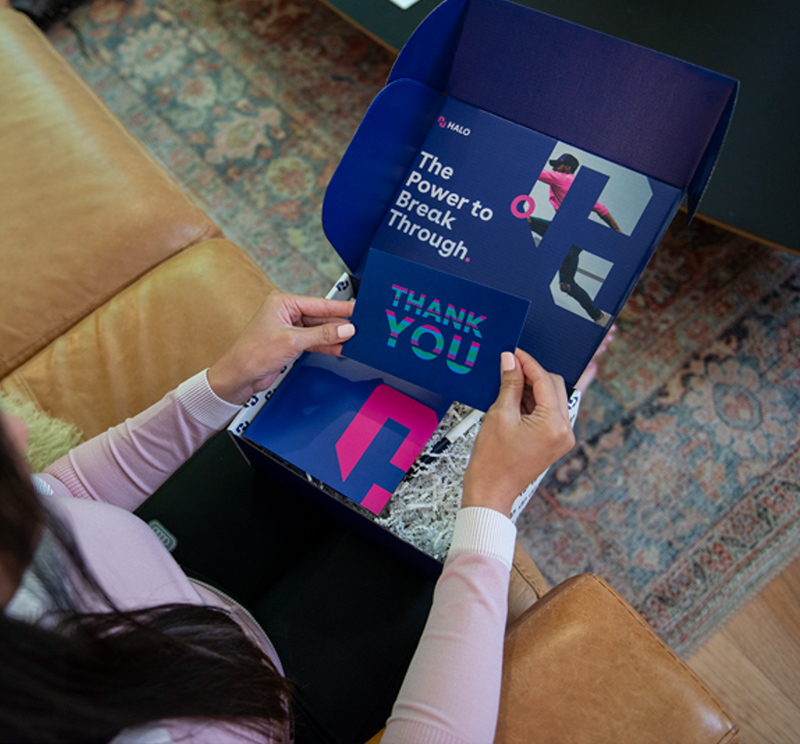Summary
We sat down with Michael Litos, Director of Client Strategy and Solutions for HALO’s Recognition business unit, to discuss the evolving landscape of employee recognition.
Employee Recognition: Trends and Best Practices
We sat down with Michael Litos, Director of Client Strategy and Solutions for HALO’s Recognition business unit, to discuss the evolving landscape of employee recognition. With nearly a decade at HALO, Mike has worked closely with clients and sales teams to develop recognition solutions that align with company culture and drive meaningful engagement. In this Q&A, he shares insights on what makes recognition impactful, how companies can integrate it into their culture, and the trends shaping the future of appreciation.

Michael Litos, Director of Client Strategy & Solutions
Meet Michael Litos, HALO’s Director of Client Strategy and Solutions for HALO’s Recognition and Incentives division. Michael’s team handles all sales support activity, from transitioning a client’s vision into reality to ensuring the process flows smoothly inside HALO. Based on the eastern shore of Virginia, Michael cut his teeth in the mid-90s dot-com boom, creating recognition and loyalty solutions alongside emerging technology. When not working, Michael usually plays on the pickleball courts or golf course, and when it comes time to relax, he enjoys everything the Chesapeake Bay has to offer.
Q: What types of recognition have the most lasting impact on employees, and how do you ensure it feels authentic?
Michael: The most effective recognition is personal and meaningful to the individual. One-size-fits-all approaches don’t work. Some employees love public recognition in front of peers, while others prefer a quiet, personal acknowledgment. Technology allows us to personalize recognition more than ever, whether through digital platforms, social recognition, or manager-led appreciation. It’s about making sure the moment is tailored to the recipient so they feel genuinely valued.
Q: How can organizations align recognition programs with their goals and values across hybrid and in-office teams?
Michael: Recognition should be embedded into the company’s core values, not treated as an afterthought. The best programs align with broader business objectives—whether it’s reinforcing company culture, improving retention, or driving performance. A successful program is flexible, ensuring employees—whether in-office or remote—have access to recognition in a way that suits their work environment. It’s about designing an inclusive, adaptable system, and an ongoing part of the employee experience rather than a standalone initiative.
Q: What’s a quick way for organizations to show appreciation to employees if they don’t have a formal recognition program in place?
Michael: If you realize that you need to prioritize recognition but don’t have a full program in place yet, start small. A simple, well-planned gifting strategy can go a long way. Reserve some budget for appreciation efforts, like allowing employees to choose from a few curated gift options. Even a personalized thank-you message from leadership or a team-wide acknowledgment can make an impact. The key is to make it feel intentional and genuine rather than just a rushed initiative.

Q: How do employees feel about redeeming rewards on platforms like Amazon versus curated recognition programs?
Michael: While convenience is a significant factor, clicking a button on Amazon for a reward lacks the personal touch that makes recognition meaningful. Recognition isn’t just about receiving something—it’s about the experience. A curated recognition program provides a more thoughtful and impactful moment, ensuring employees feel genuinely appreciated rather than just another transaction. The ability to personalize a reward, add a message from leadership, or incorporate company values into the experience makes all the difference.
Q: Are employee service awards still meaningful?
Michael: Service awards still matter, especially for longer milestones like 10, 20, or 25 years. In a time where job-hopping is common, recognizing tenure reinforces loyalty and commitment. However, they shouldn’t stand alone—when integrated into a broader recognition strategy with personal touches and meaningful rewards, they remain impactful. If they feel like just another automated milestone, they lose their value.
Q: How does team-based recognition contribute to a collaborative and motivated workforce?
Michael: Team-based recognition is a powerful way to reinforce collaboration and celebrate collective success. When recognition extends beyond individual achievements and highlights the accomplishments of a group, it fosters a stronger sense of camaraderie and motivation. Employees are more likely to stay engaged when they see their efforts contributing to a larger goal, and this type of recognition builds a culture of support and shared achievement.
Q: How can companies make Employee Appreciation Day meaningful and not just a one-off event?
Michael: Employee Appreciation Day is a great moment to recognize teams, but it shouldn’t be the only time recognition happens. Organizations that weave recognition into their culture year-round see much better engagement and morale. It’s about creating a cadence—whether through peer-to-peer recognition, leadership shoutouts, or regular milestone celebrations. A single day can serve as a launchpad, but real impact comes from consistent and meaningful appreciation.
Q: How do onboarding and employee welcome kits contribute to a positive first impression?
Michael: First impressions matter, and a well-thought-out onboarding experience can set the tone for an employee’s entire journey with a company. Welcome kits are an easy yet powerful way to make new hires feel included and valued from day one. These employee onboarding kits can include branded merchandise, personalized notes from leadership, and practical tools to help employees integrate into their roles. A meaningful onboarding experience fosters engagement early on, reinforcing the company culture and setting employees up for long-term success.

Q: How does cross-departmental recognition impact employee engagement?
Michael: Cross-departmental recognition is incredibly valuable because it breaks down silos and fosters a stronger sense of unity within an organization. When employees receive recognition from colleagues outside their immediate teams, it reinforces the idea that their contributions impact the company. It’s a great way to highlight collaboration and encourage knowledge sharing between departments. When done effectively, it helps employees feel more connected and appreciated across the entire organization rather than just within their specific teams.
Q: What is the key takeaway for organizations looking to strengthen their recognition programs?
Michael: Recognition isn’t about checking a box—it’s about creating a culture where employees feel valued every day. As organizations continue to evolve, the key to success will be balancing technology, personalization, and a strong connection to company values.






